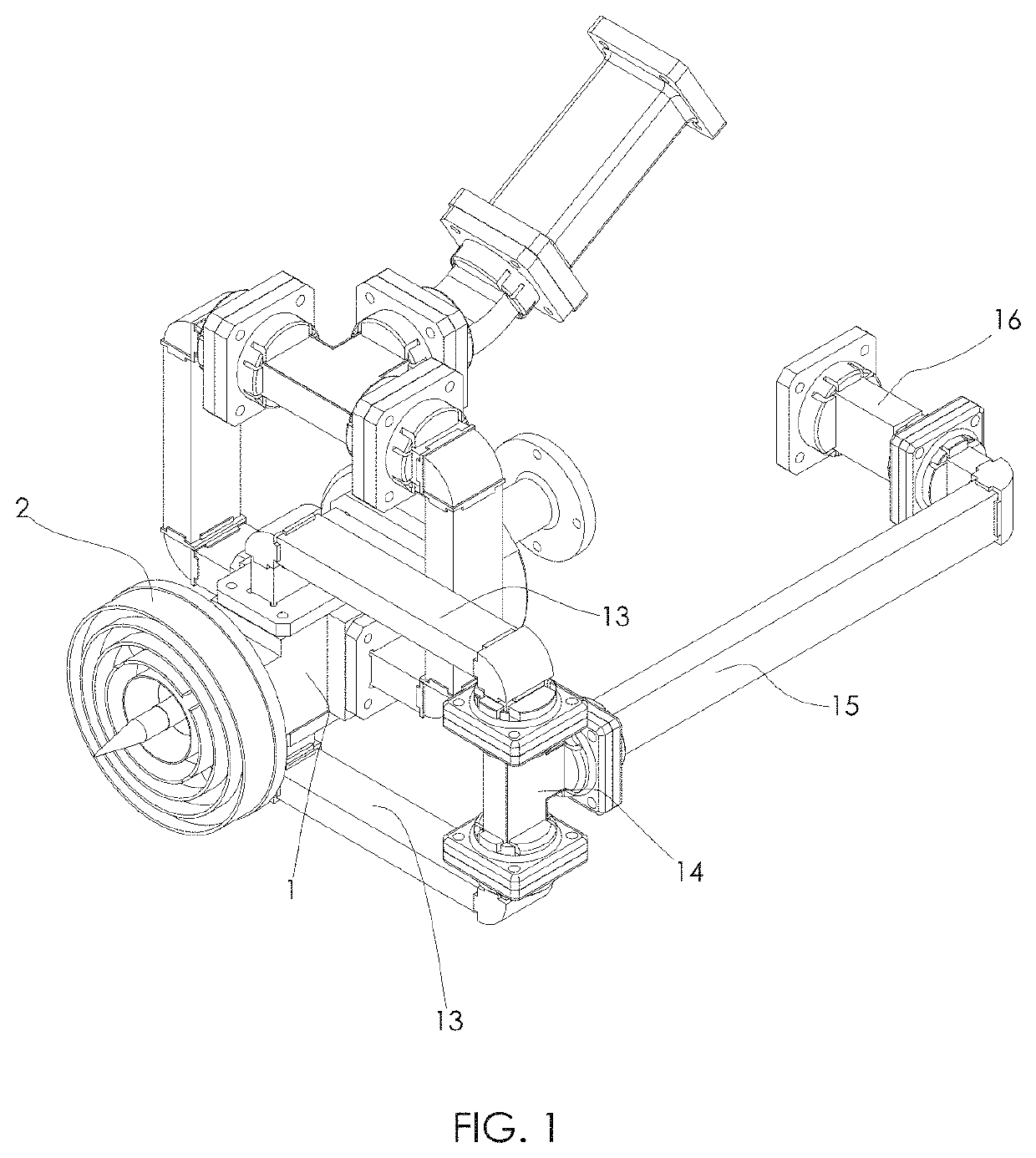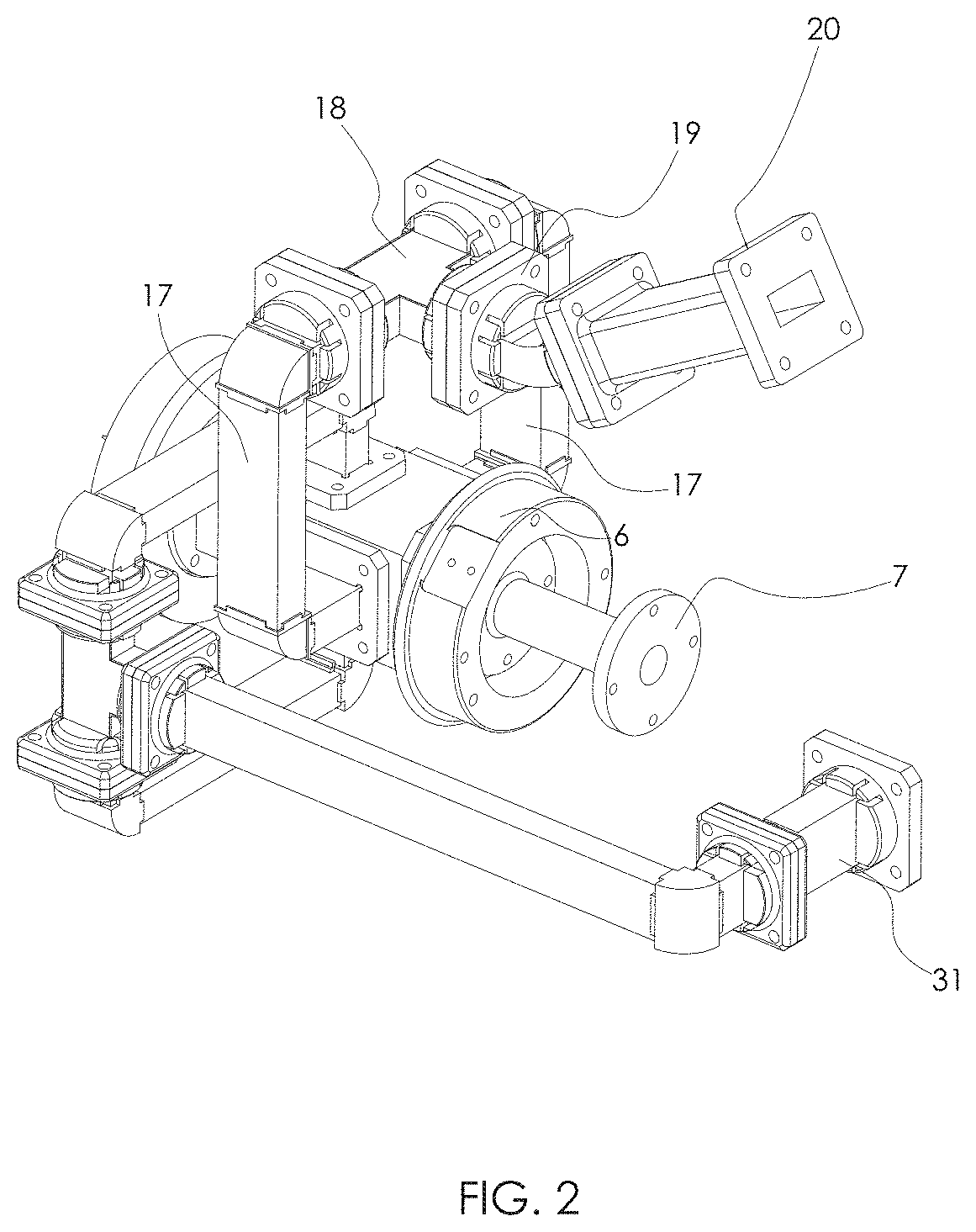Dual polarized dual band full duplex capable horn feed antenna
a dual-band, full-duplex technology, applied in the direction of antennas, antenna details, antenna couplings, etc., can solve the problems of insufficient tx/rx isolation and cross polarization performance for many applications such as satellite communications, configurations which could potentially be overmoded in the outer waveguide, and design incompatible with properly functioning balanced feed networks. , to achieve the effect of suppressing spurious generation, minimizing cross coupling to the higher band, and high return loss
- Summary
- Abstract
- Description
- Claims
- Application Information
AI Technical Summary
Benefits of technology
Problems solved by technology
Method used
Image
Examples
Embodiment Construction
[0020]The disclosure provides a single combined antenna having more than one antenna. The single combined antenna has a plurality of sub apertures in the same physical location or collocated environment.
[0021]The sub apertures are individually coupled to a transmitting and receiving dual polarized capable high band circular waveguide (low band) and also a two channel (high band) with separate Tx and Rx channel capability. An OMT is realized by injecting a plurality of phase and amplitude balanced signals oriented in such a way as to create balanced & symmetric E and H fields within the coaxial guide. Disclosed embodiments include a radiating structure to minimize cross coupling of individual bands. Disclosed embodiments include an OMT integrated with a coaxial waveguide base structure. The frequency ratio of the center to outer waveguide structures is within the range on excess of 3:1 or more and thereby enables adjacent frequency band maximized operation. In some prior referenced e...
PUM
 Login to View More
Login to View More Abstract
Description
Claims
Application Information
 Login to View More
Login to View More - R&D
- Intellectual Property
- Life Sciences
- Materials
- Tech Scout
- Unparalleled Data Quality
- Higher Quality Content
- 60% Fewer Hallucinations
Browse by: Latest US Patents, China's latest patents, Technical Efficacy Thesaurus, Application Domain, Technology Topic, Popular Technical Reports.
© 2025 PatSnap. All rights reserved.Legal|Privacy policy|Modern Slavery Act Transparency Statement|Sitemap|About US| Contact US: help@patsnap.com



